Field Note: Following Fish Migration Up the Pescadero Creek Watershed
A Field Note from the Pescadero Creek Watershed
by Kara Glenwright
Join CalTrout staff Kara Glenwright, Will Ware, Patrick Samuel, & Claire Buchanan as they travel through the Pescadero Creek watershed where CalTrout works to monitor and understand the behavior and movements of salmon and steelhead. In Pescadero, we are joined by our partners: California State Parks Environmental Scientist, Ryan Diller; California Department of Fish & Wildlife Fisheries Biologist, Sean Cochran; and San Mateo Resource Conservation District Senior Technical Director, Jim Robins.
The Ocean & the Estuary
We begin at the ocean where CalTrout Bay Area Regional Director Patrick Samuel tells us we will work our way upstream – just like the endangered coho salmon and threatened steelhead that swim here. It has been raining persistently the past few days, and so the sun above us is a pleasant (and warm) surprise as we school like fish on the coastal bluff overlooking the craggy coastline to our left.
Many moons ago, this landscape transitioned from an oak valley to a large coastal marsh as sea-level rose after the last ice age. Today, the estuary formed by the confluence of Pescadero and Butano creeks off to our right is smaller. How did we get here? Over the years, the system has been manipulated again and again. Settlers altered the marsh by building levies that trapped water for agriculture and duck hunting, increasing sediment runoff from the hills with logging, and changing how water flows from source to sea. It seems that the Pescadero Creek watershed has seen it all.
California State Parks Environmental Scientist Ryan Diller tell us how State Parks came to acquire the property in and around the marsh. In the beginning, the property was treated as a pristine landscape. A snow globe of sorts, the landscape was admired for its beauty, but human hands beneath the glass were discouraged. This was despite all the human hands that had come before, leaving behind a network of levees and channels altering the inherited marsh land. In the early 1990s, mindsets began to shift to allow for active management and the intimate connection State Parks holds with the landscape today. The proverbial snow globe melted just like the ice age had signaling the time for people to dig their hands into the land as they began to actively manage it for the benefit of wildlife and people.
And there was – and still is – a lot to manage. A disconnected creek, fish kills, and anoxic waters are all problems that seemed to stem from the estuary when they were really symptoms of the entire watershed. San Mateo Resource Conservation District (RCD) Senior Technical Director Jim Robins, shares with us how in 2019, the RCD removed 70,000 cubic yards of dirt from Butano Creek to reconnect it with the estuary and ameliorate flooding in town. Fish can now move between the estuary and the creek. This project also reduced the effect of natural fish kills. Seasonally, the mouth of the estuary closes and dissolved oxygen in the lagoon declines, which can be dangerous for fish if they have nowhere else to go. Reconnecting Butano Creek provides more habitat for salmonids to swim upstream when this occurs. Beyond this project, the RCD continues to remain active in stewardship across this landscape.
Maintaining a healthy estuary also requires a functional upstream watershed where the fish are born and spend the first or more years of their lives.
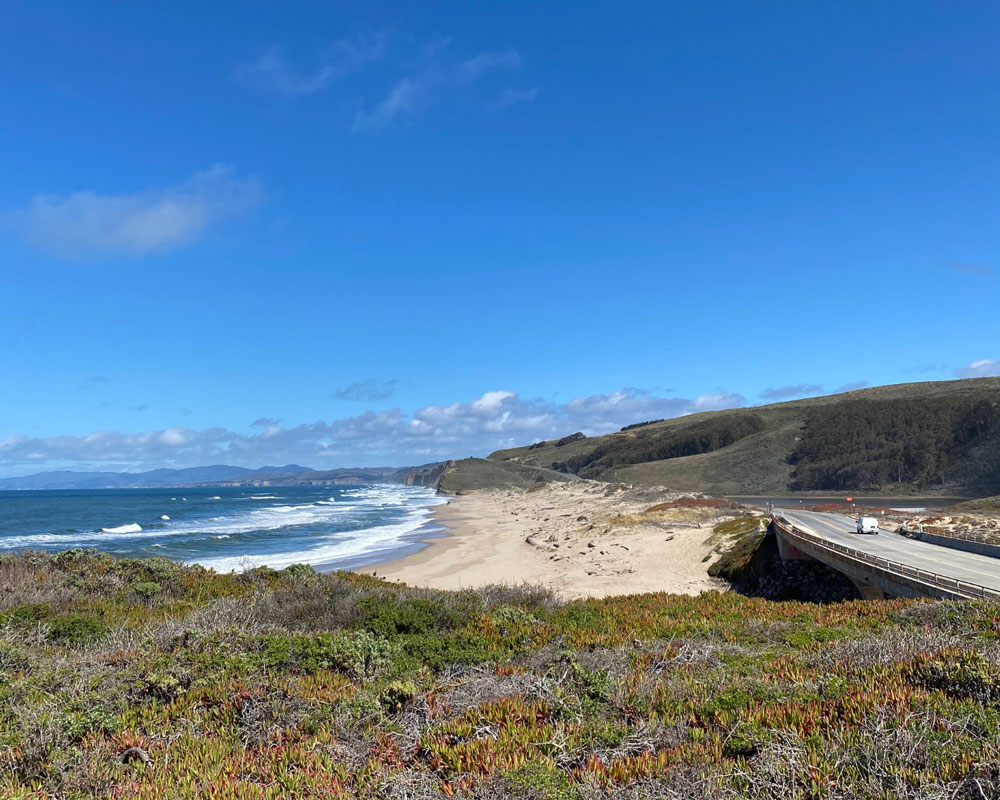
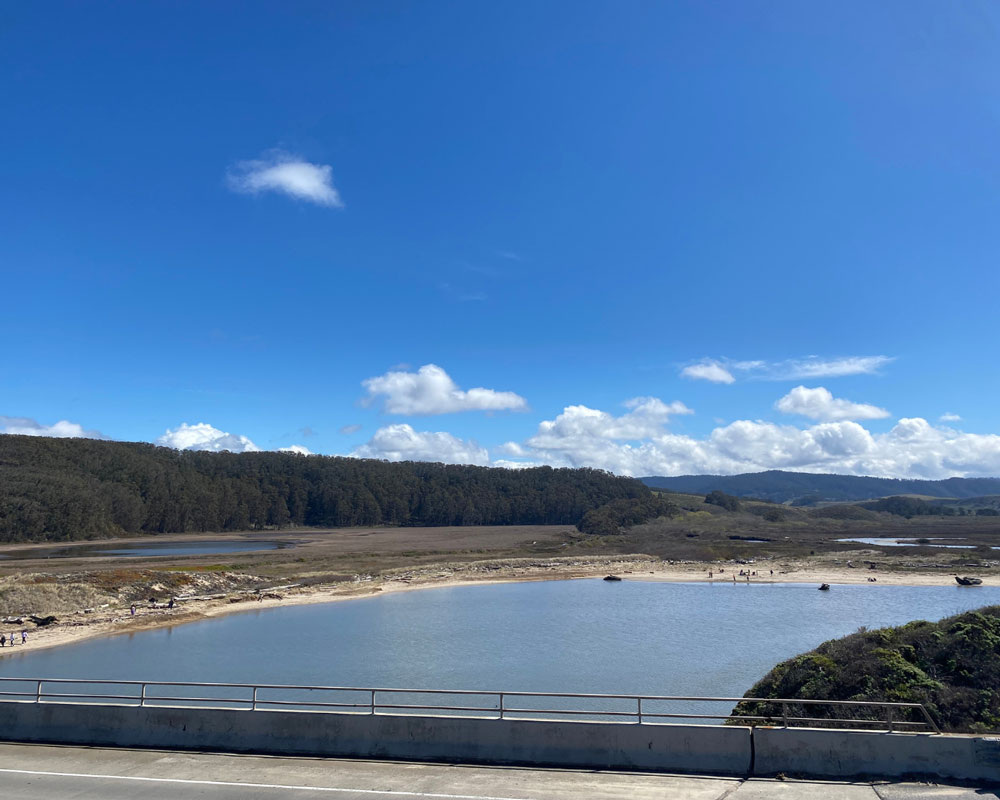
The Agricultural Basin – A Gateway
Pescadero Creek watershed is a working landscape. Agriculture is all around us and is a major driving force for the town of Pescadero’s economy. For this reason, it is crucial for CalTrout and other conservation groups to build relationships with private landowners so that we can better understand coho and steelhead at all stages of their lives and the habitat they utilize across the watershed — especially as they swim through private creek reaches.
Like the fish, we travel about four creek miles upstream to a privately owned farm bridge overlooking Butano Creek. Below us are two PIT tag antennas – a system that counts each uniquely tagged fish released with these small microchips embedded within, like the ones inside dogs and cats. As fish swim through this part of the creek, the antennas record the time of detection and swimming direction before sending this data to the cloud for us to decipher migration trends, timing, and how these fish use the creek.
CalTrout Bay Area Project Coordinator, Will Ware, works to find how coho salmon and steelhead trout use the watershed by sifting through data to match detections with fish species and to determine where these fish are coming from and which way they are going. Butano Creek is the largest tributary to Pescadero Creek and fish continuously move between the two creeks, but these fish also swim between other coastal watersheds. Waddell and Scott creeks, further south, sometimes receive fish from the Pescadero Creek watershed and the reverse is also true. It is important to remember that despite most coho and steelhead returning to the streams of their birth, some portion of the population will “stray” naturally to nearby watersheds, thereby spreading out their risk like you would spread risk in a diverse investment portfolio. This phenomenon is necessary: we need it to increase life history, geographic, and genetic diversity to recover these iconic fish. Central Coast watersheds are all connected by fish moving with and without human intervention. These systems work in concert with each other, which is why collaboration between CalTrout and our diverse partners is so important.
California Department of Fish and Wildlife (CDFW) Fisheries Biologist Sean Cochran speaks to the important partnership that CalTrout and CDFW share. We work together, collecting different elements of data to piece together a larger story for these fish. In 2014, CDFW began annual surveys of the fish population in Pescadero Creek from the estuary to the upper watershed. Then, in 2017, they began tagging steelhead in the lagoon with PIT tags.In collaboration with State Parks and the RCD, water quality monitoring data is also collected. All of this complements the data CalTrout receives from the network of antennas.
But this stop is just a gateway – a place that fish move between. Our next stop is in the redwoods – the birthplace of these fish.
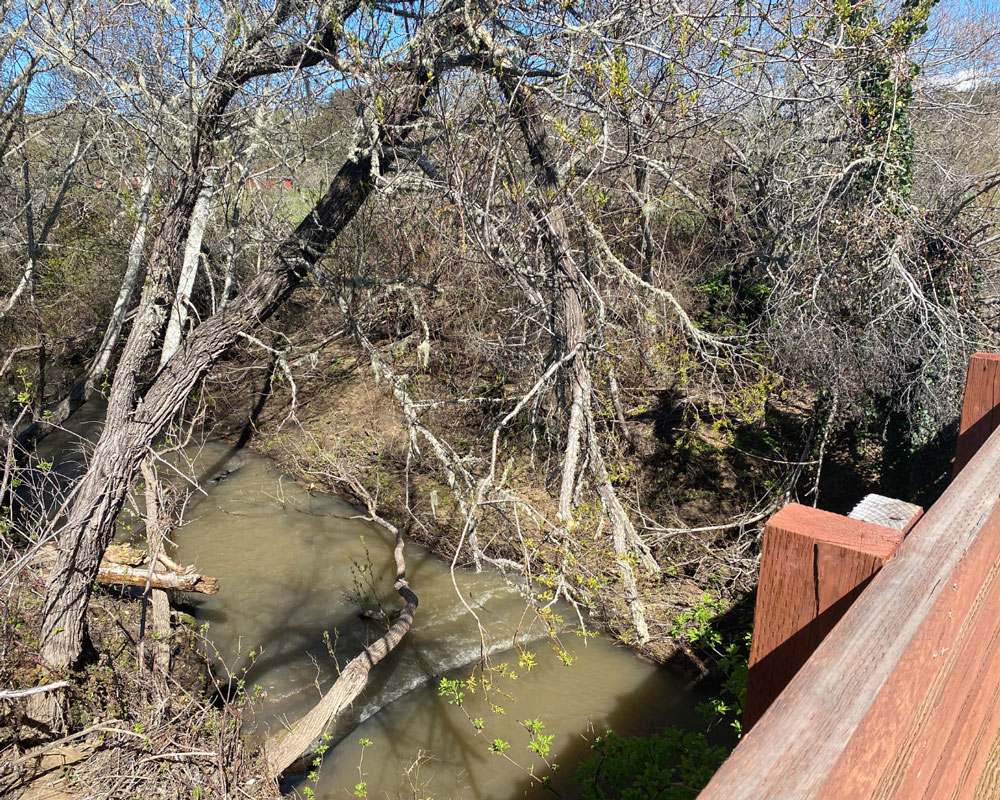
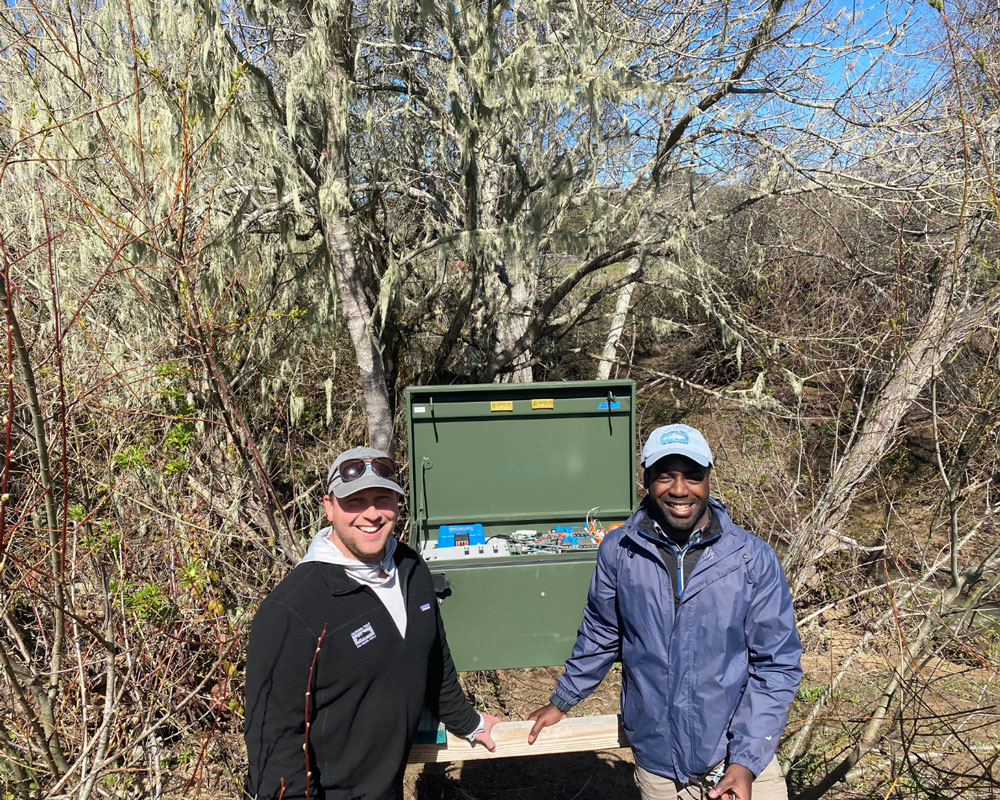
The Redwoods
The cool and graveled waters beneath redwoods in Memorial County Park are spawning grounds for these coho and steelhead, and hopefully, the site of CalTrout and our partners’ next PIT antenna!
Beneath the cool shade of these trees, CalTrout Bay Area Senior Project Manager Claire Buchanan shares with us a vision for the future. With added capacity in the Bay Area region (including Claire and Will as recent hires!) CalTrout looks to expand our footprint in the region. Our vision is to understand not just how these fish use the Pescadero Creek watershed, but to also understand how they migrate through the other systems too. We want to create a holistic picture and understand how different sections of Central Coast watersheds play coordinated roles in the lives of coho and steelhead.
CalTrout’s focus is on the fish, but as we work to understand them, a picture emerges for the whole ecosystem. Every living thing on this landscape is intimately interconnected. There are birds, endangered marbled murrelets, that make their nests in the canopies of the towering redwoods above our heads. These dual foresters and mariners fly out to sea to find fish to eat, dropping oceanic organic matter into nutrient-poor redwood forests, just like salmon and trout that fertilize forests with marine nutrients in life and death. Every link of the food chain and broader ecosystem relies on another connection. It’s almost dizzying to think about what would happen if one link in the chain was removed.
We end our day together where life begins for these fish, reflecting on the journey we have made and considering all that must work in concert for fish to undertake this same epic migration not once but twice in their lives – out to sea and back. We marvel at the resilience of these iconic species and all of the cumulative efforts to restore these fish populations right here in the Bay Area. These fish are valuable to our communities, culturally and recreationally, but perhaps most important is the indication they provide for the larger system. A healthy fish population means a healthy watershed. The surrounding community, both wildlife and human, thrives when a healthy watershed runs through it, from headwaters to sea.
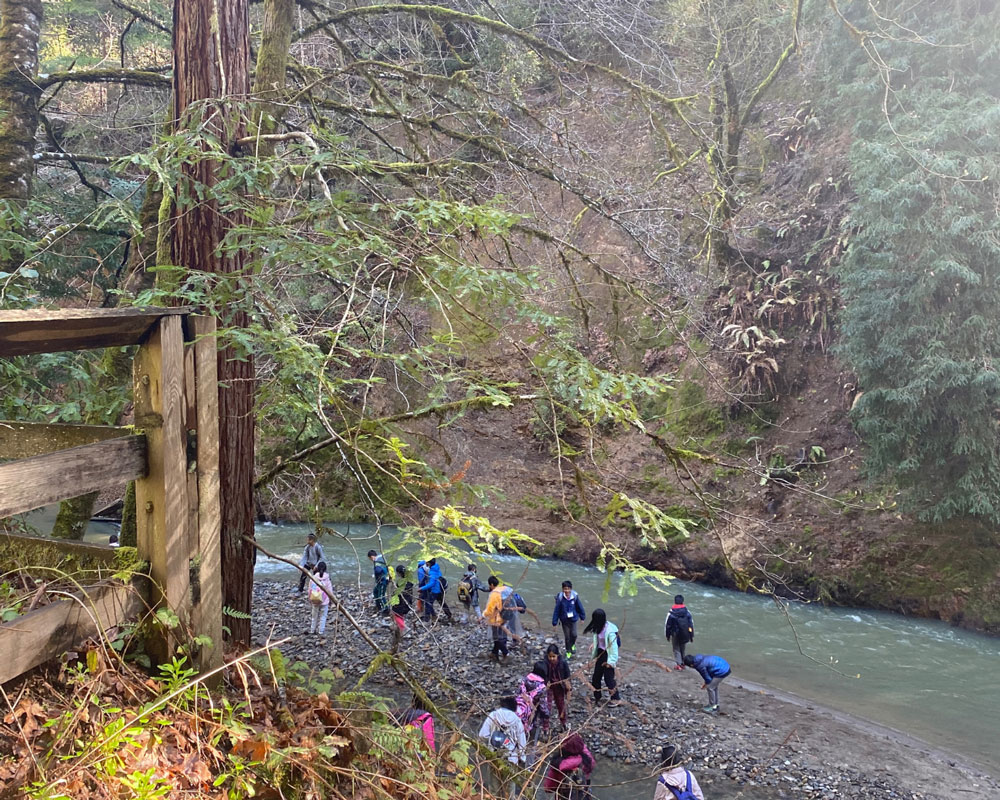
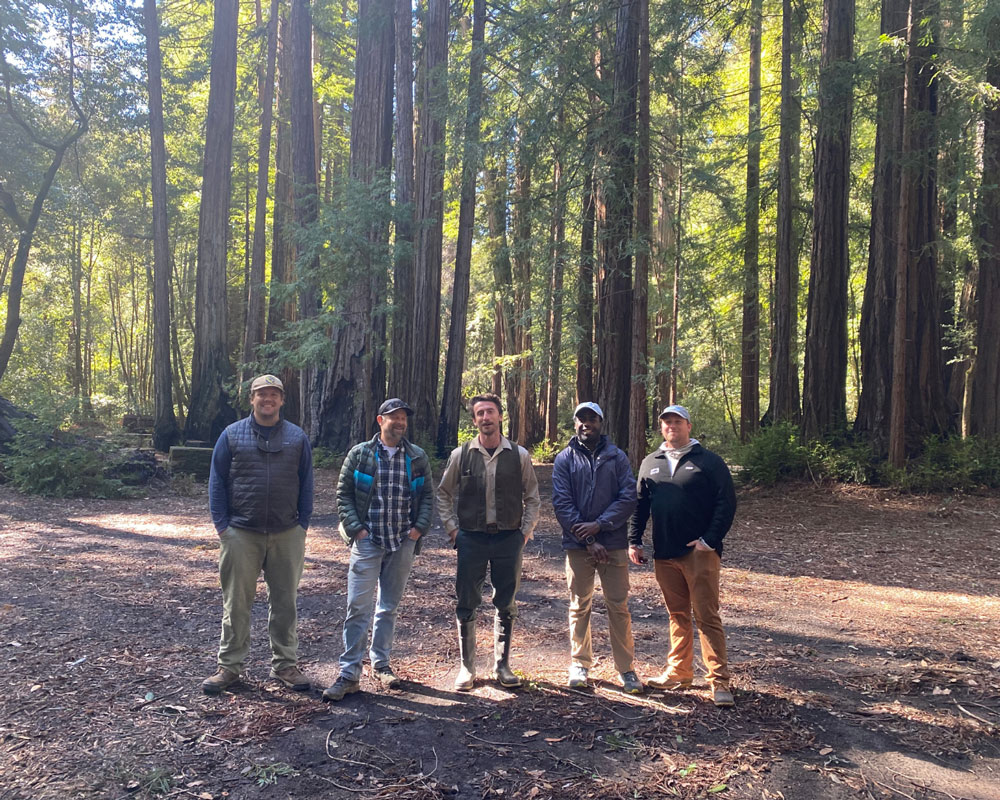






1 Comment
Grew up in San Carlos in the 50’’s. Used to fish for flounders in the estuary. We hooked a couple steelhead doing this but never landed any. In the late 50’s fishes with a neighbor and we caught several fish couple using bait. Starting fishing with flies and caught a couple and lost several more. Actually hooked one and went back into the ocean and landed it on the beach. Then discover the Russian , eel and the Mattole river. Now live in Battle Ground Washington on the east fork of the Lewis River.